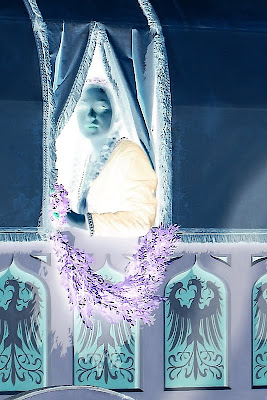Yesterday I posted the following photo, along with a message that I would post more about it tonight.

ISO 125, f/16, 1/125, 85mm.
This shot is straight from the camera. I applied some sharpening to retain detail during the resize, but no other edits were made. By placing the spires to the right, and using the clouds to create interest in otherwise negative space, mood is created and enhanced.
This photo was made in Regensburg on Saturday. Dachauplatz has a nice garage, located to be within a few minutes walk to just about anywhere in the old part of town. Parking on the roof and scanning the other roofs, this scene just begged to be photographed. The sky was stormy looking, and clouds appeared ominously ready to ruin our afternoon. I metered for the bright clouds and added about 2/3-stop exposure. This left the dark clouds about 1 and 1/3 stop below the meter reading on my 7D.
Composing to minimize intrusion of the garage and several other out of place structures, I made 2 shots about 1/3 stop apart. The mood of the image captured the light, sky, and feeling of that dreadful appearing scene.
After getting the image onto the computer, I decreased the exposure 1/2 stop, brought in the shadow levels to just right of the edge, the highlight levels a slight amount, set contrast to 3, and shadows to 2. I set the color temperature to 3500K, and adjusted the curves for maximum impact. Under the RGB tab, I reduced saturation to 0 and tweaked the curves again to create a balanced scene, resulting in the following B&W image. I applied maximum sharpening on both tabs, and felt pretty good about this image.
The rest of that afternoon was incredibly nice, the weather was on our side, we enjoyed some nice family time, and of course, some ice cream at Eis am Dom, in the Domplatz. Of course, no visit to Regensburg can be complete without a visit to Fotohaus Zacharias. I got to see their latest offerings in the old camera department and pick up some 120 film. They always have so much to choose from. I get lost dreaming about the cameras! I saw a couple old time large format cameras that were incredible. It’s definitely a place to spend a couple hours just looking!

Here's the finished version. It looks old fashioned in monochrome, and the mood is enhanced without color to distract. Converting images can often be a very simple process when you shoot for a mood.
Well, that about wraps it up for today, but I’ll be back with some more photos from the trip and techniques to get that B&W image you visualized!
Did you get any exciting images this weekend? If so, feel free to share them on our Faceboook page. Is there anything you’d like to see here? Do you have a question? Share your thoughts here or at the Hohenfels Volks Facebook page. Of course, commenting on both Facebook and here is always appreciated, too! Don't forget, we're on Google+, too!










